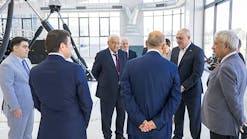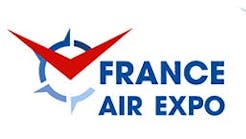Every Year
Trade associations, like all life, evolve around the calendar. There are events to plan, meetings to support and legislative schedules to observe. The issues change, but you can set your plans to the yearly routines that serve the industry.
As ARSA executive director Sarah MacLeod once wrote: “Anything worth doing is worth doing again.” That’s the truth; our ritual-like schedule maintains momentum and gets things done.
For ARSA and its members, the March release of the Global Fleet & MRO Market Assessment is an annual highlight. Produced by the association’s partners at Oliver Wyman, the report connects long-term commercial and business aviation fleet trends to business and workforce projections. The complete analysis is available only to association members, but its summaries and information sheets power the maintenance community’s advocacy with government officials.
This year is no different, though the details are certainly new. During the association’s Legislative Day on March 10, the 2021 market report will be released. (Visit arsa.org/conference to participate or follow up.) Last year’s report came out just days before the world slid into lockdown and the aviation business environment changed dramatically.
In the months that followed, ARSA and its allies worked hard in keeping up with the pandemic’s impact. Oliver Wyman posted a dashboard tracking fleet changes from air carrier traffic reductions. The association maintained a stream of updates at arsa.org/anti-viral-measures and including the results of a summer survey assessing employment and revenue trends.
The results were both stark and instructive. ARSA’s analysis projected that because of COVID-related disruptions, the U.S. maintenance industry had by June 2020 lost more than 50,000 jobs and nearly 40% of its business activity. Companies with a more diverse customer base such as air cargo, business aviation, military or government work, weren’t hit as hard and, in some cases, grew. Looking ahead, “return to normal” perspectives were diverse: from the hopeful fifth predicting they’d be back to pre-pandemic levels by the end of 2020 to the handful that believed renewal would never come (and the healthy portion who honestly admitted they didn’t know).
That knowledge drove an industry-wide effort to pursue American relief. The work was filled with successes (contract maintenance’s inclusion in recovery programs, payroll protection for small aviation companies) and lessons learned (denial of off-airport contractors, complications with certain ownership structures seeking SBA loans). Overall, the state of the aviation world is undeniably better than it would have been — you can catch up on the work that got us here at arsa.org/covid19-relief.
March has returned. A full year has elapsed. We once again await the publication of an Annual Fleet & MRO Market report. While the findings don’t change anything, describing what has happened over the last 12 months and considering what it means for the next ten years is invaluable.
No matter what the data shows, we’ll make good. It’s what we do every year.
Brett Levanto is vice president of operations of Obadal, Filler, MacLeod & Klein, P.L.C. managing firm and client communications in conjunction with regulatory and legislative policy initiatives. He provides strategic and logistical support for the Aeronautical Repair Station Association.






